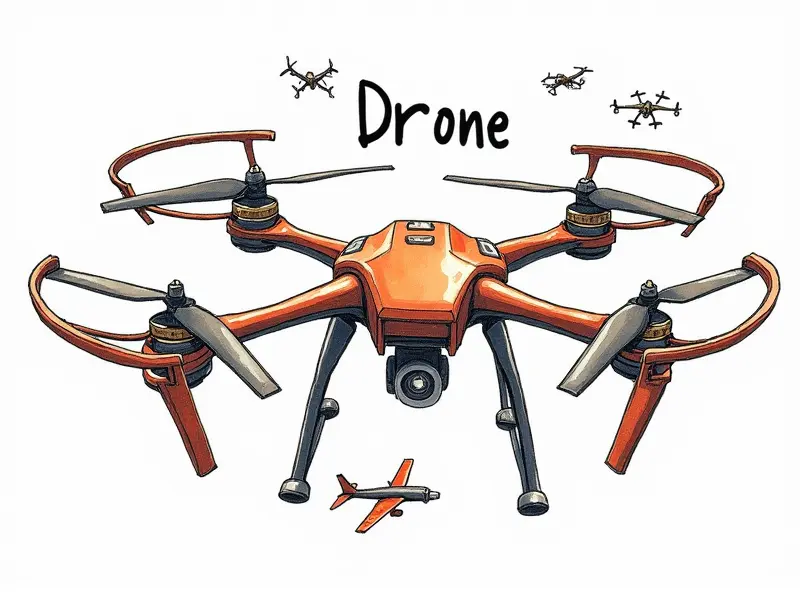How do RC planes stay aloft?

Secrets of RC Plane Flight Stability
The stability and control of radio-controlled (RC) planes are paramount to ensuring they stay aloft. Achieving flight stability in RC aircraft requires a delicate balance between aerodynamic forces, structural design, and pilot skill. Key factors include the center of gravity (CG), wing dihedral, and tailplane configuration.
Wing dihedral, or the upward angle of the wings relative to the horizontal plane, provides lateral stability by causing the aircraft to bank into a turn when one wing experiences more lift than the other. Tailplanes, including elevators and rudders, help control pitch (nose up/down) and yaw (side-to-side rotation), respectively.
Aerodynamics of RC Aircraft Demystified
Understanding aerodynamics is crucial for mastering RC plane flight. Aerodynamic principles such as lift, drag, thrust, and weight govern the performance and stability of an aircraft in flight. Lift is generated by airflow over the wing's curved upper surface, creating lower pressure above the wing compared to below it.
The angle of attack (AoA) is a critical parameter that affects lift generation; increasing AoA increases lift but also drag. Drag can be categorized into parasitic and induced types: parasitic drag includes form drag from the aircraft's shape and skin friction, while induced drag results from the wingtip vortices.
How Wing Design Affects RC Plane Flight
The design of an RC plane’s wings significantly impacts its flight characteristics. Factors such as aspect ratio (the ratio of span to chord), airfoil profile, and sweepback angle all contribute to lift generation and stability. Aspect ratio affects the balance between induced drag and structural strength.
Airfoils are designed with specific curvature profiles optimized for different performance goals—some prioritize high lift at low speeds, while others emphasize efficiency at higher speeds. Sweepback reduces drag at transonic speeds but can compromise maneuverability.
Understanding Thrust in RC Aviation
The powerplant of an RC plane generates thrust through propellers or jet engines, pushing the aircraft forward and overcoming aerodynamic drag to maintain flight. Propeller efficiency depends on blade pitch, diameter, and RPM (revolutions per minute).
A well-tuned engine provides optimal performance across a range of airspeeds, balancing power output with fuel consumption. Properly matched propellers ensure efficient thrust generation without excessive noise or vibration.
Tips for Improving RC Plane Airtime
- Optimize Weight Distribution: Adjust the center of gravity by shifting payload or adding ballast to improve stability and lift efficiency.
- Select Appropriate Wing Loading: Choose wing loading that matches your flying conditions, ensuring adequate lift for takeoff and sustained flight.
- Maintain Clean Airframe: Regularly clean the airframe of dirt and debris to reduce parasitic drag.
- Tune Propeller and Engine: Fine-tune propellers and engines for peak performance at your intended flying speeds.
Lift and Drag in RC Planes Explained
Lift is the upward force generated by airflow over a wing, perpendicular to the direction of motion. It counteracts gravity and allows an aircraft to ascend and maintain altitude. Lift depends on several factors including airspeed, angle of attack, and wing area.
Drag opposes forward movement and consists of parasitic drag from the aircraft's shape and induced drag due to lift generation. Minimizing drag is essential for efficient flight performance, as it directly impacts fuel consumption and range.
Mastering RC Planes: Stay Aloft Techniques
Mastery of RC plane flying involves honing skills in maneuvering, navigation, and troubleshooting. Effective techniques include smooth throttle control, precise rudder and elevator inputs, and maintaining situational awareness.
Pilots must also be adept at diagnosing issues such as poor glide performance or excessive yaw, addressing them through adjustments to trim settings, propeller pitch, or wing configuration.
The Science Behind RC Plane Lift
Lift generation in RC planes relies on Bernoulli's principle and Newton’s laws of motion. As air flows faster over the curved upper surface of a wing compared to the lower surface, pressure differences create lift.
Newtonian principles explain that lift also results from downward deflection of airflow by the wing, producing an equal and opposite upward force according to Newton's third law.
Essential Skills for RC Plane Pilots
- Familiarize with Controls: Understand how each control surface affects flight dynamics—aileron for roll, elevator for pitch, rudder for yaw—and practice coordinated movements.
- Practice Takeoffs and Landings: Master smooth transitions between phases of flight to ensure safe operation.
- Analyze Flight Data: Use telemetry data to assess performance metrics such as airspeed, altitude, and engine RPM.
Balancing Forces for RC Plane Flight
Maintaining stable flight requires balancing four fundamental forces: lift, drag, thrust, and weight. Lift must exceed weight for ascent; thrust must counteract drag to maintain forward motion.
Pilots must constantly adjust these forces through control inputs and engine settings to achieve optimal performance and stability throughout the flight envelope.
Understanding RC Plane Ailerons & Elevators
Ailerons are hinged surfaces on the trailing edge of wings that control roll (lateral movement). They work in opposition—when one aileron deflects upward, the other deflects downward—to bank the aircraft into turns.
Elevators, located at the tailplane, control pitch by moving up or down to change the angle of attack and thus lift. Proper coordination between ailerons and elevators ensures smooth transitions during maneuvers.
Conclusion
Mastery of RC plane flight involves understanding aerodynamic principles, optimizing wing design, and honing piloting skills. By balancing forces effectively and employing efficient techniques, enthusiasts can enjoy extended flights with improved stability and performance. Whether you're a beginner or an experienced pilot, continuous learning and practice will enhance your ability to keep RC planes aloft.

